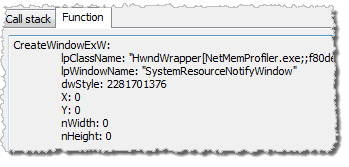Overview
Includes a list of all the types and resources in the profiled process. This list is collected during a heap snapshot and presents the number of instances and allocated bytes of each type, as well as the number of allocations performed per second.
If unmanaged resource tracking is enabled, then information about unmanaged resources is also presented in this view.

Below the Types/resources list there is a Filters list. It includes information based on saved "instance and allocation" filters. The information presented is the same as, or a subset of, the types information.

The change of live instances between two snapshots is also shown. This information can be used to find memory leaks.

By selecting to show dispose information, information about disposed and undisposed instances is presented. Undisposed instance are disposable instances that have been garbage collected without being properly disposed.

A summary of all memory usage issues that have been identified by the automatic memory analyser is also presented in this view.


















